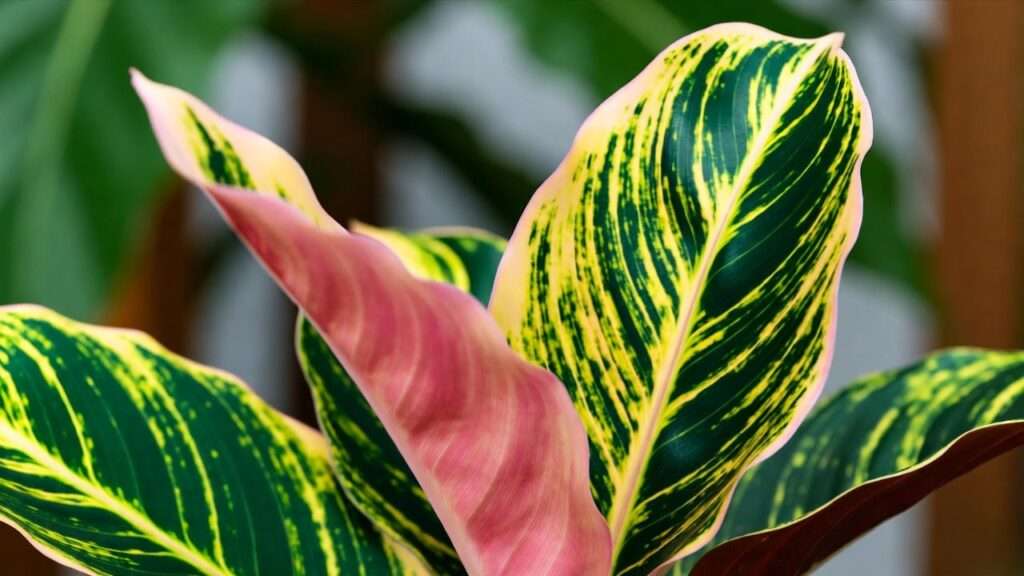Imagine a plant so stunning it stops you in your tracks, its leaves ablaze with fiery hues of green, cream, yellow, and pinkish-orange. The Philodendron Ring of Fire is that plant—a tropical masterpiece that transforms any space into a vibrant jungle. Whether you’re a seasoned plant parent or a curious beginner, mastering the care of the Ring of Fire plant can be a rewarding journey. But its unique variegation and tropical nature come with specific needs that can make or break its beauty. 🌴 In this comprehensive guide, we’ll dive into everything you need to know to grow and care for a thriving Ring of Fire plant, from ideal conditions to troubleshooting tips, ensuring those vibrant blooms flourish year-round. Backed by horticultural expertise and real-world experience, this article is your roadmap to success with this showstopping houseplant. 🌱
1. What Is the Ring of Fire Plant? 🌿
1.1 Botanical Overview
The Philodendron Ring of Fire is a striking hybrid, born from the crossbreeding of Philodendron wendlandii and Philodendron tortum. Its name comes from its breathtaking variegated foliage, featuring elongated, serrated leaves splashed with green, cream, yellow, and fiery pinkish-orange hues. Each leaf is a unique work of art, making it a favorite among collectors and indoor gardeners. Native to tropical regions, this cultivar thrives in environments that mimic its humid, warm origins, but its adaptability makes it a fantastic choice for indoor spaces worldwide.
1.2 Why Choose the Ring of Fire Plant?
The Ring of Fire plant isn’t just a visual stunner—it’s a statement piece that elevates any room’s aesthetic. Its vibrant colors pair beautifully with modern or bohemian decor, making it ideal for homes, offices, or even small apartments. Beyond looks, it offers air-purifying benefits, removing toxins like formaldehyde from the air, as noted in NASA’s Clean Air Study. While not as low-maintenance as a snake plant, its care requirements are manageable with the right knowledge, offering a rewarding challenge for plant enthusiasts. Whether you’re drawn to its tropical flair or its ability to spark conversation, this plant is a must-have. 🌞
2. Ideal Growing Conditions for the Ring of Fire Plant 🌞
To unlock the full potential of your Ring of Fire plant, you need to recreate its tropical habitat. Let’s break down the key conditions: light, temperature, humidity, and soil.
2.1 Light Requirements
The Ring of Fire plant thrives in bright, indirect sunlight, which enhances its vibrant variegation. Place it near an east-facing window or filter light through sheer curtains to mimic dappled jungle shade. Too much direct sun can scorch its delicate leaves, causing brown, crispy edges, while too little light dulls its colors and slows growth. Aim for 6–8 hours of filtered light daily. If natural light is limited, consider a full-spectrum grow light (4000–6000K) to maintain those fiery hues. 💡 Tip: Rotate the plant every few weeks to ensure even light exposure.
2.2 Temperature and Humidity
As a tropical native, the Ring of Fire loves warmth and moisture. Keep temperatures between 65–80°F (18–27°C), avoiding drafts or sudden drops below 55°F (13°C), which can stress the plant. Humidity is critical—aim for 60–80% to prevent brown leaf tips and encourage lush growth. In dry climates or winter months, use a humidifier, group plants together, or place a pebble tray filled with water beneath the pot. Pro Insight: Misting is less effective than consistent humidity sources, as it provides only temporary relief. 🌬️
2.3 Soil Preferences
The Ring of Fire demands a well-draining, airy potting mix to prevent root rot, a common issue with philodendrons. A blend of 50% peat moss, 30% perlite, and 20% orchid bark works wonders, providing aeration and moisture retention. The soil pH should be slightly acidic, between 5.5–6.5. Adding a handful of activated charcoal can further improve drainage and deter fungal growth. Expert Tip: Avoid heavy, compacted soils like standard potting mix, which can suffocate roots and lead to waterlogging. 🌱
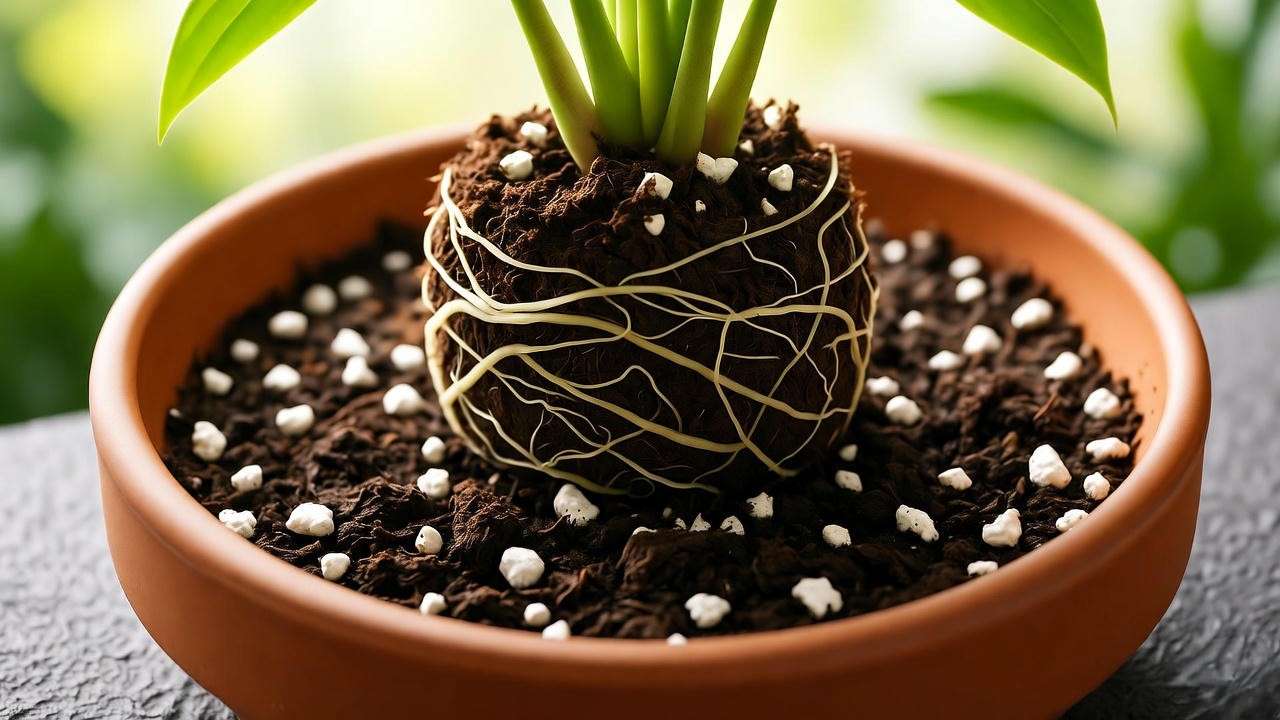
3. Step-by-Step Care Guide for a Thriving Ring of Fire Plant 🌱
With the right conditions in place, daily care is straightforward but requires attention to detail. Here’s how to keep your Ring of Fire thriving.
3.1 Watering
Water your Ring of Fire when the top 1–2 inches of soil feel dry, typically every 7–10 days, depending on your climate and season. Use a moisture meter or your finger to check. Water thoroughly until it drains from the pot’s bottom, but never let the plant sit in standing water. Overwatering is the leading cause of root rot, so err on the side of underwatering. Common Mistake: Watering on a fixed schedule without checking soil moisture—always assess the plant’s needs first. 💧
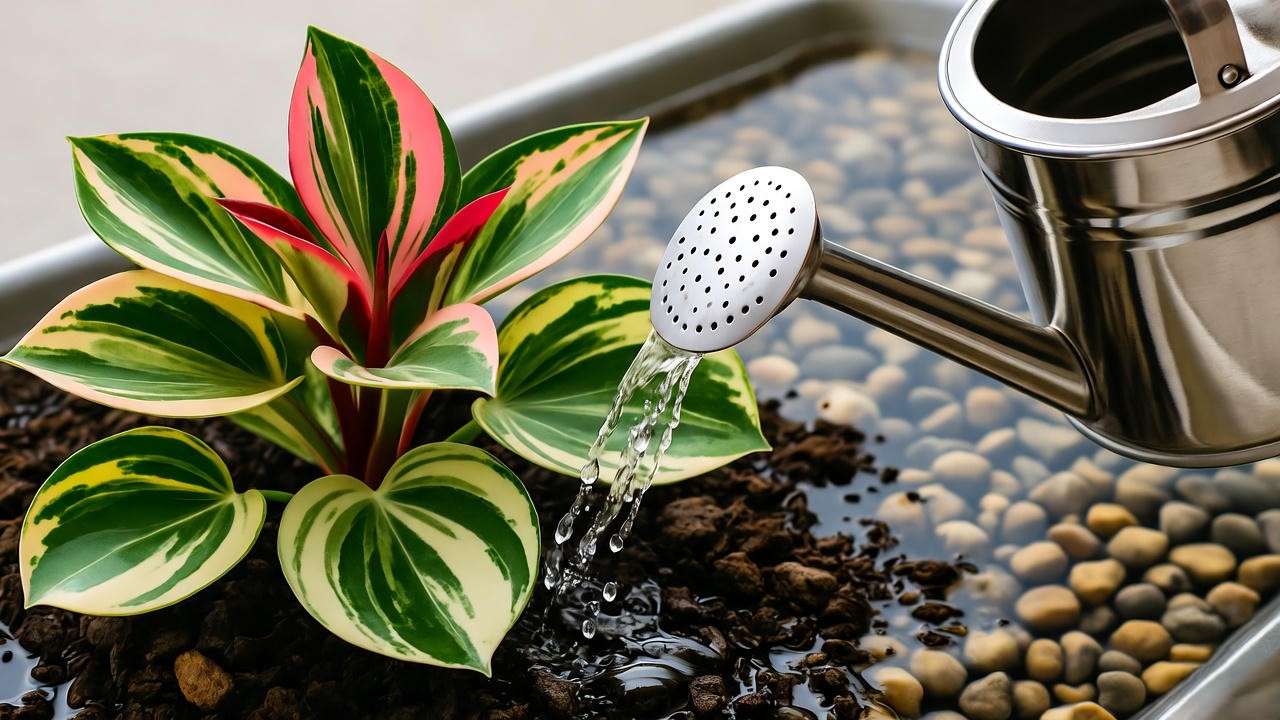
3.2 Fertilizing
Feed your Ring of Fire monthly during the growing season (spring and summer) with a balanced, water-soluble fertilizer, such as a 20-20-20 blend, diluted to half strength. This supports healthy foliage and vibrant variegation. In fall and winter, reduce or pause fertilizing as the plant enters dormancy. Over-fertilizing can cause salt buildup, leading to brown leaf tips. Pro Tip: Flush the soil with distilled water every few months to remove excess salts. 🌿
3.3 Pruning and Maintenance
Regular pruning keeps your Ring of Fire bushy and healthy. Use sterilized shears to trim yellowing or damaged leaves, cutting just above a node to encourage new growth. Pruning also helps maintain the plant’s shape and prevents legginess. Bonus Tip: Save healthy cuttings for propagation (see Section 5). Wipe leaves with a damp cloth monthly to remove dust and enhance photosynthesis. 🌸
3.4 Repotting
Repot every 1–2 years or when roots become crowded, typically in spring. Choose a pot 1–2 inches larger in diameter with drainage holes. Gently loosen the root ball, refresh the soil with a well-draining mix, and water lightly after repotting. Expert Advice: Handle roots carefully, as they’re prone to damage. Repotting during the growing season minimizes stress and promotes recovery. 🪴
4. Common Problems and Solutions 🩺
Even with perfect care, issues can arise. Here’s how to diagnose and fix common problems with your Ring of Fire plant.
4.1 Yellowing Leaves
Yellow leaves often signal overwatering, poor drainage, or insufficient light. Check the soil—if it’s soggy, reduce watering and ensure the pot drains well. Move the plant to a brighter spot if light is lacking. Solution: Adjust your watering routine and confirm the soil mix is airy and well-draining.
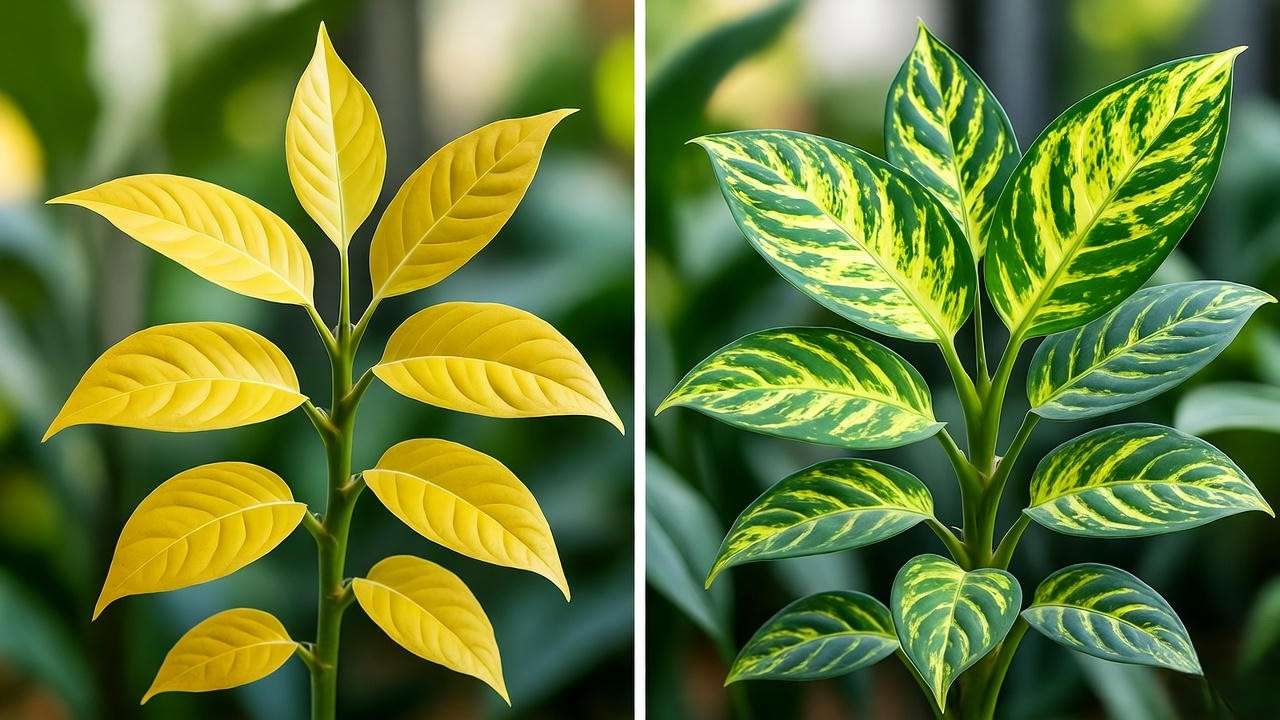
4.2 Brown Leaf Tips
Brown, crispy leaf tips are typically caused by low humidity or over-fertilization. Increase humidity with a pebble tray or humidifier, and flush the soil to remove excess fertilizer salts. Fix: Maintain 60–80% humidity and fertilize sparingly during the growing season.
4.3 Pests and Diseases
The Ring of Fire can attract spider mites, aphids, and mealybugs, especially in dry conditions. Inspect leaves regularly for webbing, sticky residue, or white cottony spots. Prevention: Wipe leaves with a damp cloth and apply neem oil monthly. Treatment: Isolate the plant and use insecticidal soap for infestations, repeating every 7–10 days until pests are gone.
4.4 Loss of Variegation
If your Ring of Fire loses its vibrant colors, it’s likely due to inadequate light. Variegated leaves need bright, indirect light to maintain their patterns. Solution: Relocate to a brighter spot or supplement with a grow light. Avoid overwatering, as it can also dull colors.
5. Propagating the Ring of Fire Plant 🌿
Propagating your Philodendron Ring of Fire is a rewarding way to expand your plant collection or share its beauty with others. This section covers the why and how of propagation, ensuring success even for beginners.
5.1 Why Propagate?
Propagation allows you to create new plants from your existing Ring of Fire, saving money and fostering a deeper connection with your plant. It’s also a sustainable practice, reducing the need to purchase new plants. Whether you want to gift a cutting to a friend or fill your home with more fiery foliage, propagation is a fun and accessible process. Plus, it’s a great way to rescue a leggy plant by encouraging new growth. 🌱
5.2 Propagation Methods
There are two primary methods for propagating the Ring of Fire plant: stem cuttings in water and stem cuttings in soil. Both are effective, but each suits different preferences and setups.
- Stem Cuttings in Water:
- Select a healthy stem with 1–2 nodes (the small bumps where leaves emerge) and at least one leaf.
- Use sterilized scissors to make a clean cut just below a node.
- Place the cutting in a clear glass of filtered water, ensuring the node is submerged but leaves stay dry.
- Change the water every 3–5 days to prevent bacterial growth.
- Place in bright, indirect light and wait 2–4 weeks for roots to form (at least 1–2 inches long).
- Transfer to a pot with well-draining soil once roots are established.
Tip: Add a drop of liquid rooting hormone to the water to speed up root development. 💧
- Stem Cuttings in Soil:
- Choose a healthy stem with 1–2 nodes and a leaf, cutting below a node.
- Dip the cut end in rooting hormone (optional but recommended for faster rooting).
- Plant the cutting in a small pot filled with a moist, well-draining mix (50% peat, 30% perlite, 20% orchid bark).
- Cover the pot with a clear plastic bag or dome to trap humidity, leaving a small opening for air circulation.
- Place in bright, indirect light and keep the soil consistently moist but not soggy.
- Roots typically form in 3–5 weeks; tug gently to check resistance.
Success Rate: Soil propagation often yields stronger roots, ideal for long-term growth. 🌱
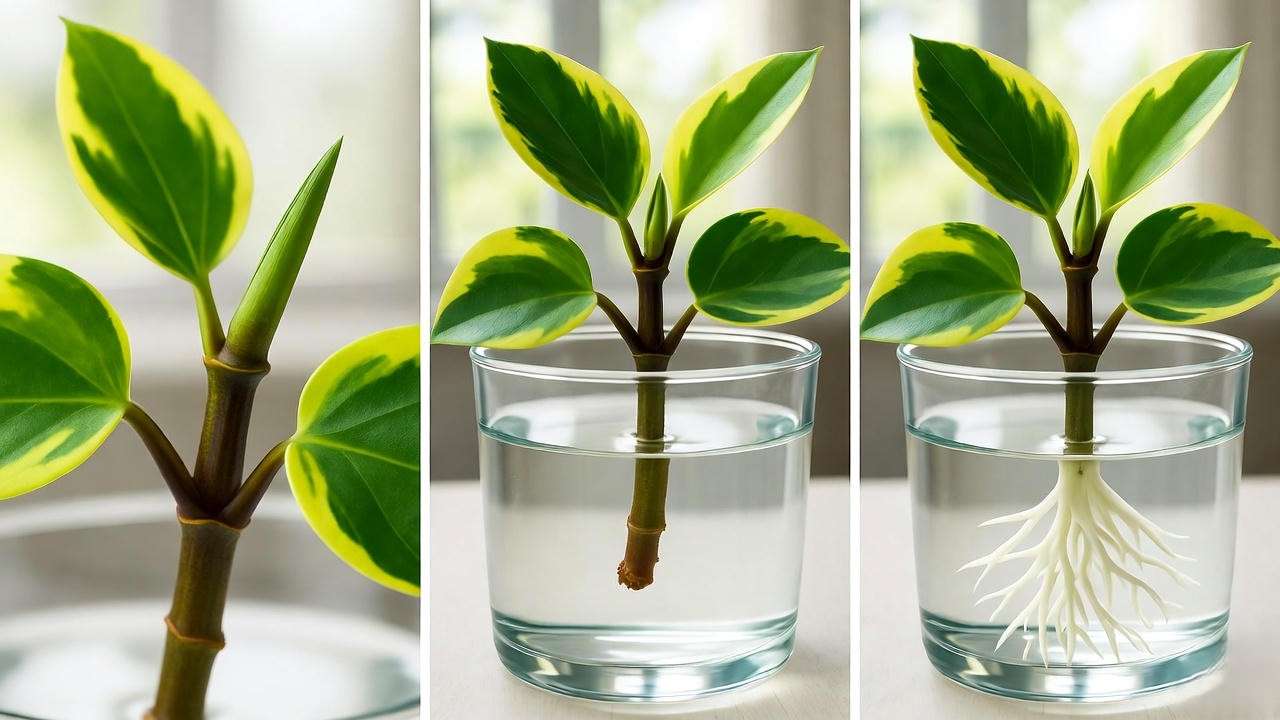
5.3 Aftercare for Propagated Plants
Once your cutting has rooted, transition it carefully to avoid shock. For water-propagated cuttings, plant in a well-draining mix and water lightly for the first week. For soil-propagated cuttings, gradually remove the humidity cover over 1–2 weeks to acclimate the plant to normal conditions. Maintain the same care routine as a mature Ring of Fire (see Section 3), ensuring bright light, proper watering, and high humidity. Pro Tip: Avoid fertilizing new plants for the first 6–8 weeks to let roots establish. 🌿
6. Styling and Displaying Your Ring of Fire Plant 🖼️
The Ring of Fire plant’s vibrant foliage deserves a display that highlights its beauty. Here’s how to style and showcase it effectively.
6.1 Indoor Placement Ideas
The Ring of Fire shines in well-lit corners of your home. Consider these placement ideas:
- Shelves or Plant Stands: Elevate the plant to draw attention to its cascading leaves.
- Hanging Baskets: Let its vines trail dramatically for a bohemian vibe.
- Centerpiece: Place in a decorative pot on a coffee table or dining area for a bold focal point.
Pair it with neutral or earthy-toned pots (terracotta, matte white, or woven baskets) to let the variegation pop. Avoid dark corners, as they dull the plant’s colors. Styling Tip: Group with other tropical plants like monstera or calathea for a lush jungle aesthetic. 🌴
6.2 Supporting Growth
As a climbing philodendron, the Ring of Fire benefits from support to encourage upward growth. Use a moss pole, trellis, or bamboo stake to guide its vines. Secure stems loosely with soft plant ties to avoid damage. DIY Idea: Create a moss pole by wrapping sphagnum moss around a PVC pipe and securing it with twine—perfect for maintaining humidity and supporting growth. This setup mimics the plant’s natural epiphytic tendencies, enhancing both health and aesthetics. 🪴
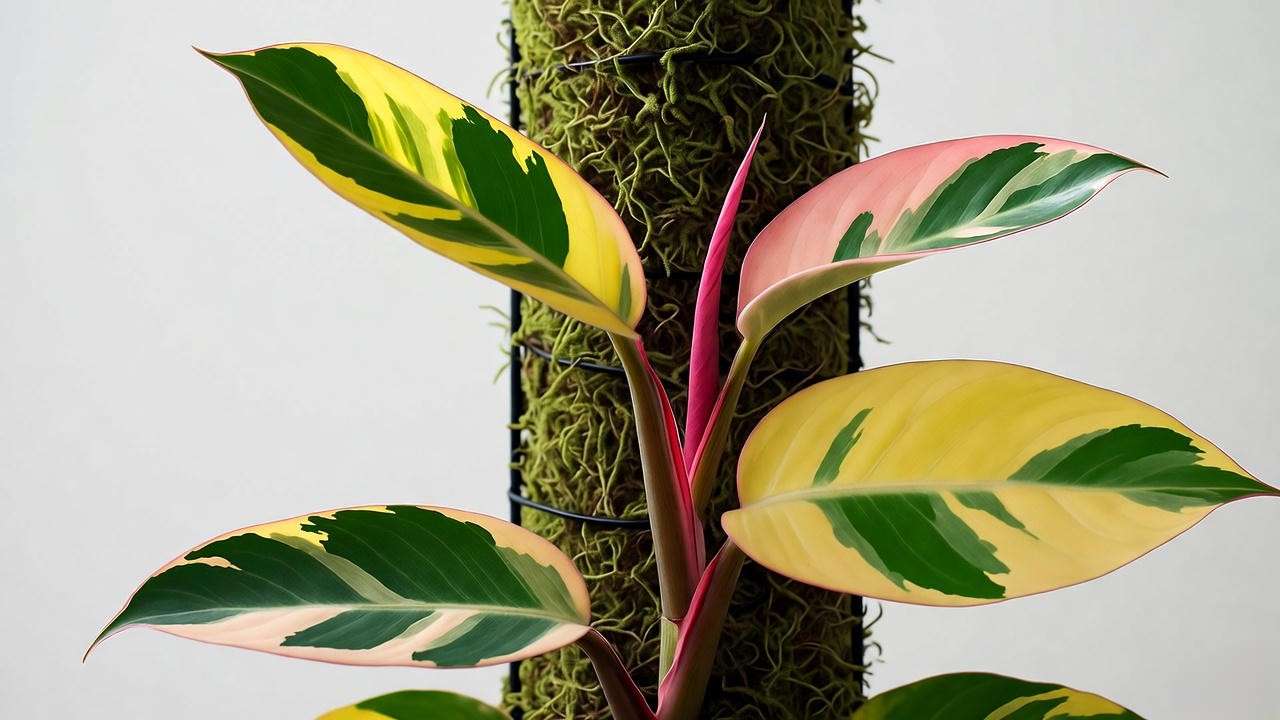
7. Expert Insights and Advanced Tips 🌟
To take your Ring of Fire care to the next level, incorporate these expert-backed strategies:
- Boost Variegation: In winter or low-light conditions, use a full-spectrum grow light (12–14 hours daily) to maintain vibrant colors. Studies from the University of Florida’s horticulture department show that supplemental lighting enhances variegation in philodendrons.
- Water Quality: Use filtered or rainwater to avoid chemical buildup from tap water, which can cause leaf spotting. This is especially important in areas with hard water.
- Case Study: A plant enthusiast in Seattle revived a struggling Ring of Fire by increasing humidity to 70% with a humidifier and relocating it to a brighter spot. Within two months, new leaves displayed stunning pink and yellow variegation.
- Sustainability Tip: Compost pruned leaves or use them for propagation to minimize waste. Alternatively, donate healthy cuttings to local plant swaps or community gardens. 🌱
8. Frequently Asked Questions (FAQs) ❓
Here are answers to common questions about the Ring of Fire plant, addressing reader concerns and boosting SEO with natural LSI keywords like “philodendron care,” “variegated houseplants,” and “tropical plant tips.”
- Q1: Why is my Ring of Fire plant losing its variegation?
A: Insufficient light is the primary culprit. Move the plant to a spot with bright, indirect sunlight or add a grow light. Ensure you’re not overwatering, as this can also dull colors. - Q2: How often should I mist my Ring of Fire plant?
A: Misting 2–3 times weekly can help, but it’s less effective than a humidifier or pebble tray for maintaining consistent 60–80% humidity, which is critical for tropical plants. - Q3: Is the Ring of Fire plant toxic to pets?
A: Yes, like most philodendrons, it’s toxic to cats and dogs due to calcium oxalate crystals. Keep it out of reach and contact a vet if ingestion occurs, per ASPCA guidelines. - Q4: Can I grow the Ring of Fire plant outdoors?
A: Only in USDA zones 10–11, where temperatures stay above 55°F (13°C). Ensure it’s in a shaded, humid spot with protection from direct sun and wind.
9. Conclusion and Call-to-Action 🌈
The Philodendron Ring of Fire is more than a houseplant—it’s a vibrant, living work of art that rewards dedicated care with stunning foliage. By providing bright, indirect light, maintaining high humidity, and following a consistent watering and fertilizing routine, you’ll ensure your plant thrives for years. Whether you’re propagating cuttings, styling it as a centerpiece, or troubleshooting issues, this guide equips you with expert-backed strategies to succeed. 🌿 Ready to grow your own Ring of Fire? Start today, and share your success stories in the comments below! Subscribe for more plant care guides, or explore our articles on variegated houseplants and tropical care tips. Join our plant community on social media for real-time advice and inspiration. 🌟

